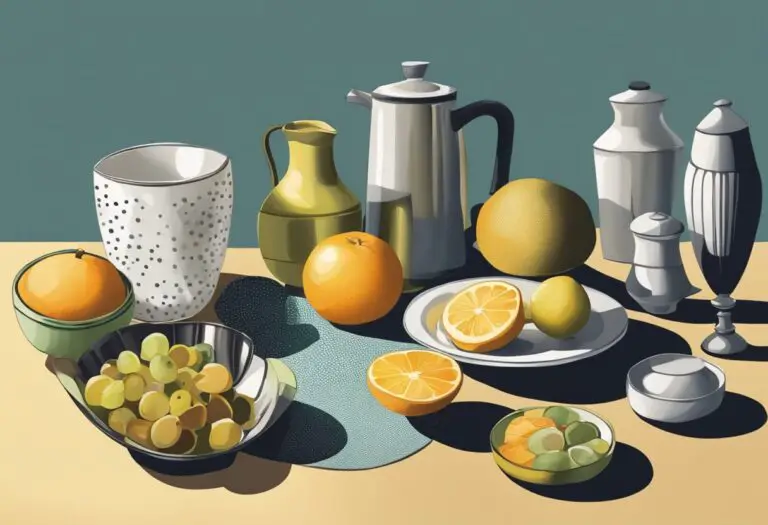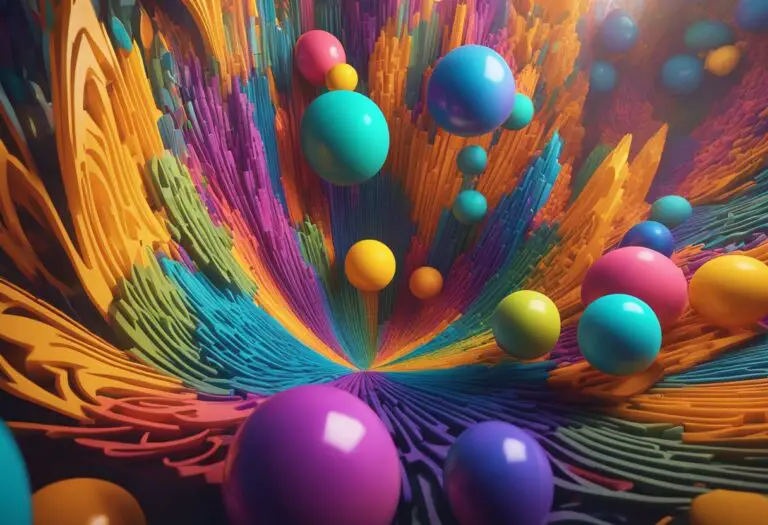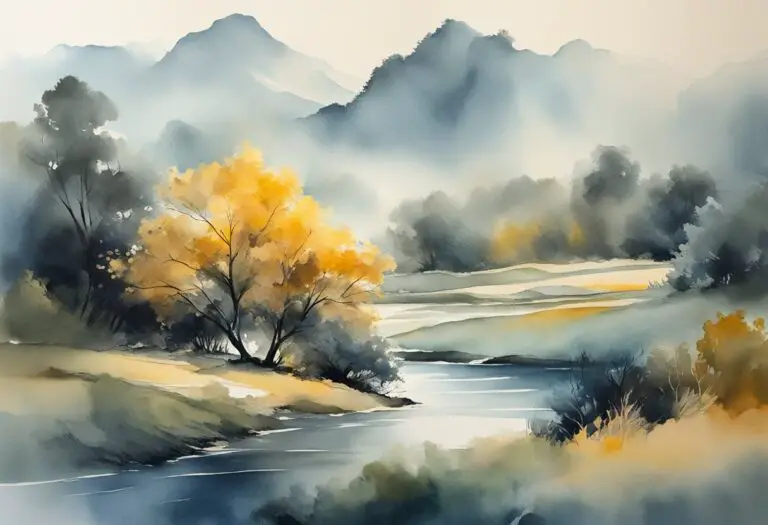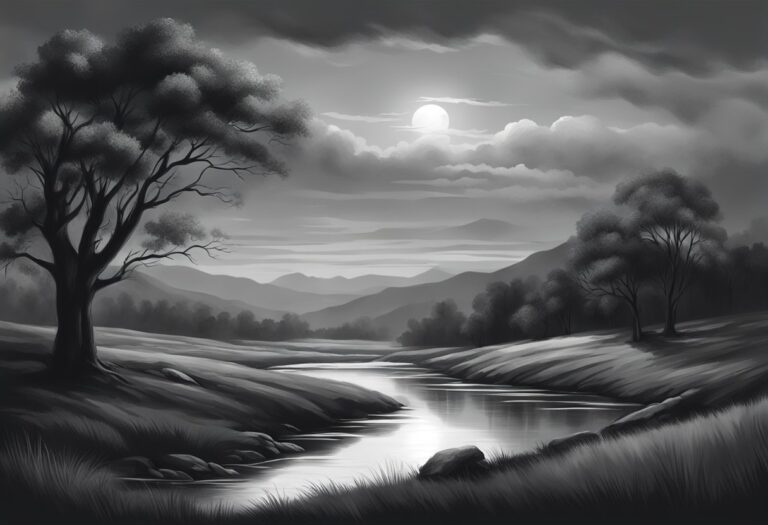Master Blending Painting Technique – Artistic Guide
Have you ever wondered how artists seamlessly blend colors on canvas, creating breathtaking masterpieces? What if we told you that there is a technique that allows artists to achieve flawless color transitions and realistic effects? Discover the art of blending painting, a captivating method that elevates your artwork to new heights.
Blending painting is more than just mixing colors—it’s a skill that requires precision, patience, and a deep understanding of painting methods. Whether you work with acrylics or oils, this technique offers endless possibilities for expressing your creativity and capturing the essence of your subjects.
In this comprehensive guide, we delve into the world of blending painting. From understanding the fundamentals of color mixing to mastering brushwork techniques, we cover everything you need to know to create seamless blends. Join us as we explore the tools, materials, and styles that define the art of blending painting, and learn practical tips and tricks from seasoned artists.
Embark on a journey of artistic discovery as we unveil the secrets behind professional blending painting. Unlock your potential and bring your artworks to life with the mastery of this timeless technique. Are you ready to immerse yourself in the world of blending painting?
Understanding the Blending Painting Technique
The blending painting technique is a fundamental skill that artists can explore to create seamless and captivating artworks. By mastering the art of blending, artists can seamlessly merge colors and create smooth transitions, resulting in stunning visual effects. This technique finds its applications in various painting mediums, including oil painting and acrylic blending.
One crucial aspect of the blending painting technique is color mixing. By understanding how colors interact and blend together, artists can achieve their desired hues and tones in their artwork. Whether it’s mixing primary colors to create secondary shades or creating subtle gradients, color mixing is essential for achieving realistic and harmonious blends.
Blending in oil painting involves layering thin glazes of paint, gradually building up the colors and creating smooth transitions between them. This method allows artists to achieve depth and richness in their artwork. On the other hand, acrylic blending requires artists to work quickly due to the fast-drying nature of acrylic paints. They can use wet-on-wet techniques or utilize various mediums to extend the drying time and facilitate easier blending.
The Importance of Blending Brushes
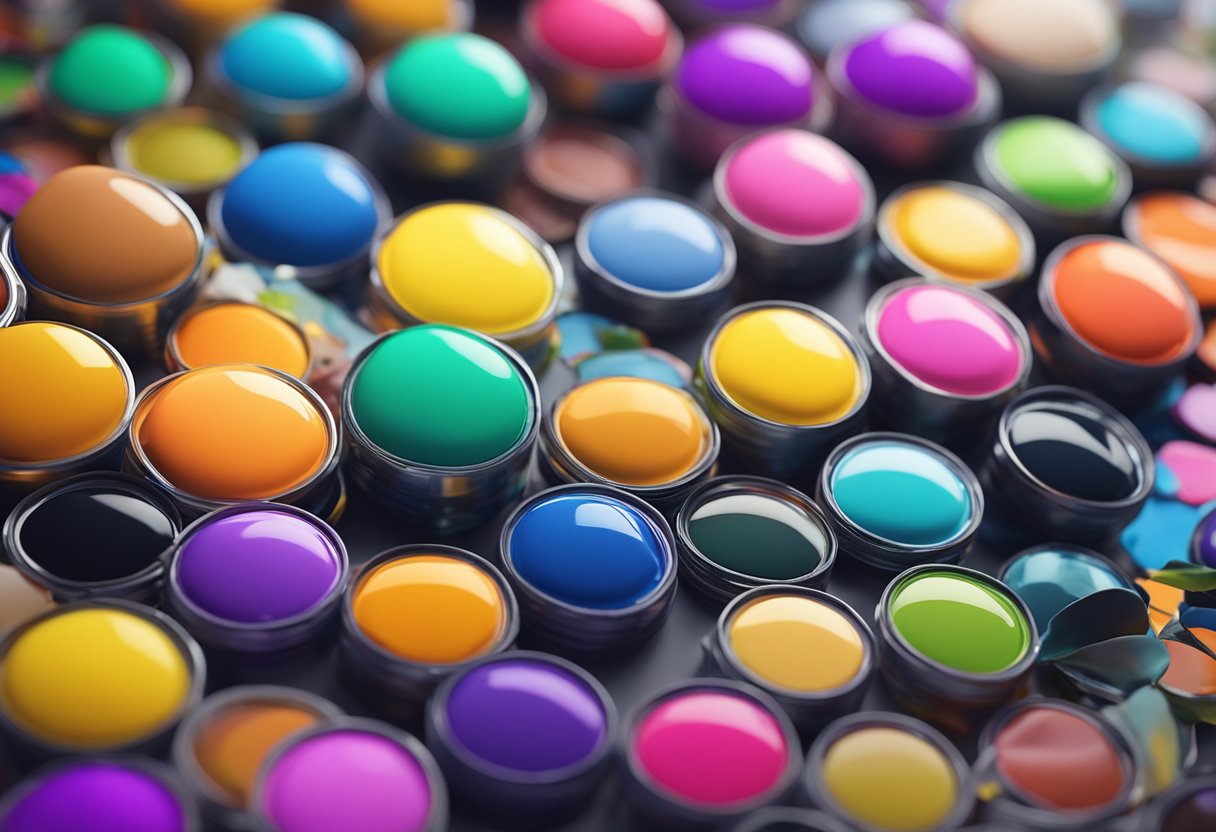
When it comes to blending, the choice of brushes plays a significant role in achieving the desired results. Blending brushes are specifically designed with soft bristles that allow artists to blend colors smoothly and effortlessly. These brushes help create gradients, soft edges, and seamless color transitions, enhancing the overall visual appeal of the artwork. Artists can experiment with different blending brushes to find the ones that suit their preferred style and technique.
Blending is a technique that requires practice and experimentation. With time and experience, artists can develop their own unique blending style and create breathtaking artworks.
| Blending Painting Techniques | Description |
|---|---|
| Wet-on-Wet Blending | This technique involves applying wet paint onto a wet surface, allowing the colors to blend naturally. It creates soft and smooth transitions between different hues. |
| Glazing | Glazing involves layering transparent or translucent colors over dry layers of paint to achieve subtle depth and color variations. It is commonly used in oil painting. |
| Scumbling | Scumbling is a dry brushing technique where thin layers of opaque paint are applied over a dry surface. It adds texture and creates interesting visual effects. |
By exploring different blending techniques, artists can expand their artistic abilities and create unique effects in their artwork. From smooth gradients to textured surfaces, blending techniques offer endless possibilities for creative expression.
Tools and Materials for Blending Painting
When it comes to achieving seamless blends in your artwork, having the right tools and materials is crucial. Blending brushes and other essential painting methods can make all the difference in achieving the perfect blend of colors. Let’s explore some of the key tools and materials that can help elevate your blending technique.
Blending Brushes
Blending brushes are specifically designed to facilitate the blending process by creating smooth transitions and gradients. These brushes have soft bristles that allow you to soften edges and merge colors seamlessly. Different blending brushes offer varying degrees of control and texture, allowing artists to experiment with different blending techniques and achieve unique effects.
Some popular types of blending brushes include:
- Round Blending Brush: This brush has a round, tapered shape that is perfect for creating soft blends and transitions. It can be used for both small and large areas.
- Flat Blending Brush: A flat blending brush is ideal for achieving precise blends and detail work. The flat shape allows for controlled blending and smooth color gradations.
- Fan Blending Brush: The fan-shaped bristles of this brush create delicate, feather-like blends. It is especially useful for blending clouds, foliage, and other organic textures.
Other Essential Tools
In addition to blending brushes, there are other tools that can greatly enhance your blending painting technique.
| Tool | Description |
|---|---|
| Mixing Palette | A palette provides a surface for mixing and blending colors. Choose a palette that allows you to easily mix and test colors before applying them to your artwork. |
| Palette Knife | A palette knife is useful for mixing colors and creating textured blends. Its flat, flexible blade allows artists to achieve unique blending effects. |
| Blending Medium | A blending medium can be added to your paint to extend its drying time and improve its blending properties. It allows for smoother color transitions and easier manipulation of the paint. |
By using the right blending brushes and other essential tools, artists can achieve professional-level blends that bring their artwork to life. Experimenting with different tools and materials can help you discover new techniques and develop your own unique style of blending painting.
Color Mixing for Blending
Color mixing is a crucial aspect of the blending painting technique. It allows artists to achieve seamless transitions and create harmonious blends in their artwork. Whether you are working with oil paints or acrylics, understanding how colors interact and blend together is essential for achieving the desired effects.
When it comes to color mixing for blending, there are a few key tips and techniques to keep in mind:
- Start with a limited color palette: Begin with a small selection of primary colors and gradually mix them together to create secondary and tertiary colors. This approach allows for greater control and consistency in your blends.
- Experiment with different ratios: Varying the proportions of colors in your mixtures can produce different shades and intensities. Don’t be afraid to play around and find the perfect balance for your desired blend.
- Use a clean palette: Ensure your palette is clean and free from any residual color before starting a new mix. This prevents unwanted contamination and ensures accurate color representation.
- Blend colors gradually: When mixing two colors, blend them gradually by adding small amounts of one color to the other. This allows for better control over the blending process and helps avoid sudden, jarring transitions.
To visualize the different color mixtures and blends, refer to the table below:
| Primary Colors | Secondary Colors | Tertiary Colors |
|---|---|---|
| Red | Orange | Red-Orange |
| Blue | Green | Blue-Green |
| Yellow | Purple | Yellow-Purple |
“Color mixing is like a dance, where each hue joins the others in a graceful blend. The more you practice and experiment, the better you will become at creating seamless transitions and captivating blends.”
Remember, color mixing is a skill that develops with practice. The more you experiment with different color combinations and techniques, the more confident you will become in achieving beautiful, blended effects in your artwork.
Brushwork Techniques for Blending
When it comes to mastering the blending painting technique, understanding brushwork techniques is essential. The way an artist handles their brushes can greatly influence the blending process and the final outcome of their artwork. By experimenting with different brush strokes, layering techniques, and methods, artists can achieve a range of effects and textures in their blended artworks.
Blending brushes play a crucial role in achieving seamless blends. These specially designed brushes are typically soft and have longer bristles, allowing artists to smoothly merge colors together. Rather than sharp or stiff brushes that can create harsh lines, blending brushes enable artists to achieve gentle transitions and gradations of color.
One brushwork technique commonly used in blending is the “scumbling” technique. This involves using a dry brush loaded with paint to create a textured and blended effect on the canvas. By lightly dragging the brush over the surface, artists can create subtle variations in color and tone, adding depth and dimension to their artwork.
Layering techniques can also be employed to enhance blending. Artists can build up layers of color gradually, allowing each layer to dry before adding the next. This technique creates a smooth transition between colors, producing a realistic and cohesive result. It’s important to consider the opacity and transparency of the paint being used to achieve the desired blending effect.
Another brushwork technique that artists can explore is the “feathering” technique. This involves using quick and light strokes to blend colors together, creating soft and feathery edges. Feathering is especially effective when blending colors with similar tones, producing a subtle and seamless transition.
Ultimately, the key to mastering brushwork techniques for blending is practice and experimentation. By trying different brush strokes, layering techniques, and methods, artists can develop their own unique style and achieve the desired effects in their artwork.
Blending Styles in Painting
When it comes to creating unique and visually striking artwork, artists often experiment with different blending styles. These styles involve various techniques that employ the blending painting technique to achieve specific visual effects. Whether you’re an oil painter or prefer working with acrylics, understanding these blending styles can take your artwork to new heights.
Wet-on-Wet Blending
One popular blending style is wet-on-wet blending, which involves applying wet paint onto a still-wet background or base layer. This technique allows colors to mix and merge seamlessly, creating soft transitions and a sense of depth in the artwork. Artists can use various brushes to achieve different effects, from smooth gradients to textured blends.
Glazing
Another blending style is glazing, which involves applying transparent or semi-transparent layers of paint over a dry base layer. This technique allows artists to build up color and depth gradually while creating a luminous and translucent effect. By layering transparent colors, artists can achieve a rich and vibrant appearance in their artwork.
Scumbling
In the world of blending styles, scumbling is a technique that involves applying a thin layer of opaque or semi-opaque paint over a dry base. This technique creates a textured effect, where the colors of the base layer peek through the scumbled layer. Artists can use various brushstrokes and techniques to create interesting textures and visual interest in their artwork.
“Blending styles in painting allow artists to express their creativity and add depth to their artwork. Whether it’s using wet-on-wet blending for smooth transitions or incorporating glazing and scumbling to create texture, these styles offer endless possibilities for artists to explore.” – Jennifer Adams, Professional Artist
By incorporating these blending styles into their artwork, artists can elevate their pieces and add a touch of uniqueness. Whether it’s creating seamless gradients with wet-on-wet blending, building up layers with glazing, or adding texture with scumbling, these styles provide artists with a wide range of possibilities to experiment and create stunning visual effects.
| Blending Style | Technique | Effect |
|---|---|---|
| Wet-on-Wet Blending | Applying wet paint onto a wet background | Soft transitions, depth, smooth gradients |
| Glazing | Applying transparent or semi-transparent layers | Luminous, translucent effect, rich colors |
| Scumbling | Applying thin layer over dry base | Textured effect, colors peek through |
Tips and Tricks for Mastering Blending
Mastering the blending painting technique takes practice and skill. In this section, we provide practical tips and tricks that can help artists elevate their blending abilities and create seamless and professional-looking artwork. Whether you’re working with acrylics or exploring different blending styles, these tips will guide you towards achieving your artistic vision.
1. Control Drying Times
Controlling the drying times of your paint is crucial for achieving smooth blends. Acrylics dry quickly, so it’s important to work efficiently when blending. One technique is to mist your palette with water to keep the paint moist for longer. Another option is to use a slow-drying medium or a wet palette to extend the working time of your acrylics.
2. Experiment with Different Mediums
Blending can be enhanced by experimenting with different mediums. For acrylic blending, consider using glazing mediums to create translucent layers and enhance color transitions. For oil painting, blending mediums or linseed oil can be added to the paint to achieve smoother blends. Exploring different mediums will open up new possibilities for blending techniques and styles.
3. Utilize Blending Brushes
Having the right tools is essential for successful blending. Investing in quality blending brushes can make a significant difference in achieving smooth and seamless blends. Blending brushes have soft bristles that allow for controlled application and gentle blending. Experiment with different brush shapes and sizes to find the ones that work best for your blending style.
4. Practice Various Blending Styles
There are several blending styles that artists can incorporate into their artwork. Wet-on-wet blending involves applying wet paint onto an already wet surface, creating soft and blended edges. Glazing, on the other hand, involves applying transparent layers of paint to subtly change the color and texture of an area. Experimenting with different blending styles will allow you to develop your own unique techniques.
“Blending is an art form that requires patience and experimentation. Don’t be afraid to push boundaries and try new techniques. The more you practice and explore, the better you will become at mastering the art of blending.”
5. Layering Techniques
Layering is another effective technique for achieving smooth blends. Instead of blending directly on the canvas, apply thin layers of paint one on top of the other. This allows for gradual color transitions and creates depth in your artwork. Experiment with different layering techniques, such as scumbling or dry brushing, to achieve the desired blending effect.
6. Study Master Artists
Studying the works of master artists can provide inspiration and valuable insights into blending techniques. Analyze their brushwork, color choices, and blending styles to gain a deeper understanding of the blending painting technique. Take note of the methods they use and incorporate them into your own artistic practice.
7. Take Your Time
Mastering blending takes time and practice. Don’t rush the process and be patient with yourself. Take the time to carefully observe your blends and make adjustments as needed. Remember, every artist develops their unique style and technique through dedicated practice and experimentation.
| Tip | Description |
|---|---|
| Control Drying Times | Control the drying times of your paint to achieve smooth blends. Consider misting your palette or using slow-drying mediums. |
| Experiment with Different Mediums | Explore different mediums to enhance your blending. Use glazing mediums for acrylics and blending mediums or linseed oil for oils. |
| Utilize Blending Brushes | Invest in quality blending brushes with soft bristles for controlled application and gentle blending. |
| Practice Various Blending Styles | Experiment with wet-on-wet blending, glazing, and other blending styles to develop your unique techniques. |
| Layering Techniques | Apply thin layers of paint through layering techniques to achieve gradual color transitions and depth in your artwork. |
| Study Master Artists | Analyze the works of master artists to gain insights into their blending techniques and incorporate them into your practice. |
| Take Your Time | Be patient and dedicated in your blending practice. Every artist develops their unique style through time and experimentation. |
Step-by-Step Blending Painting Tutorial
To master the art of blending painting, it is crucial to practice the technique step-by-step. This tutorial will guide you through the process, providing detailed instructions, useful tips, and inspiring examples to help you achieve stunning blended artworks.
Step 1: Prepare Your Workspace
Before you begin, make sure you have a clean and well-lit workspace. Gather your painting materials, including acrylic or oil paints, blending brushes, palette knives, and a palette for mixing colors.
Step 2: Choose Your Colors
Select the colors you want to blend and arrange them on your palette. Experiment with different combinations to find the perfect color scheme for your artwork.
Step 3: Start with the Base Layer
Begin by applying a base layer of paint to your canvas. Use broad brush strokes or a palette knife to create a smooth, even surface. Allow the base layer to dry completely before moving on to the next step.
Step 4: Mixing Your Colors
Take a blending brush or a clean brush with soft bristles and load it with a small amount of one color from your palette. Use gentle, circular motions to blend the color onto the canvas, gradually introducing other colors and creating seamless transitions between them. Experiment with different brush sizes and pressure to achieve the desired effect.
Step 5: Layering and Building Depth
To add depth and dimension to your artwork, layer different shades of colors on top of each other. Start with lighter shades and gradually build up to darker tones, using a blend of brush strokes and gentle blending techniques.
Step 6: Refining the Details
Once you have achieved the desired blend and overall composition, focus on refining the details. Use smaller brushes or palette knives to add intricate textures, highlights, and shadows. Pay attention to the finer details to bring your artwork to life.
Step 7: Practice and Experiment
Remember that mastering the blending painting technique takes practice and experimentation. Don’t be afraid to try new approaches, explore different brushwork techniques, and mix various mediums. The more you practice, the more confident you will become in your ability to create beautiful blended artworks.
By following this step-by-step blending painting tutorial, you can develop your skills and create stunning, visually captivating artworks that showcase your mastery of the blending technique.
Blending Techniques in Different Art Styles
In the realm of art, blending techniques play a significant role in creating captivating and visually striking pieces. These techniques can be seamlessly incorporated into various art styles, including realism, impressionism, and abstract art, allowing artists to imbue their artwork with unique depth and complexity.
Realism, admired for its lifelike representations, benefits from the meticulous application of blending techniques. Artists adept in art blending understand how to delicately merge colors and tones to create smooth transitions and accurately capture the nuances of light and shadow. By skillfully blending layers of paint, they can produce realistic depictions that mirror the natural world with stunning precision.
Impressionism, on the other hand, celebrates the use of bold brushwork and vibrant colors to capture the essence of a subject. Blending techniques in impressionistic art focus on conveying a sense of movement and light through rapid brushstrokes and strategic color blending. By skillfully juxtaposing complementary or harmonious hues, artists can create a mesmerizing interplay of color and texture that evokes a lively impression rather than a precise representation.
For abstract artists, blending techniques offer endless opportunities for self-expression and experimentation. Whether it’s gradients of colors slowly merging into one another or textural blends created through the use of different mediums, blending techniques can be used to create dynamic and thought-provoking abstract art. Artists can employ various tools and methods to achieve their desired effect, allowing their creativity and imagination to run free.
Blending techniques provide artists with a versatile toolkit to express themselves across different art styles. By honing their skills in art blending, artists can adapt and tailor these techniques to suit their preferred style, creating visually captivating and evocative artworks.
Common Mistakes to Avoid in Blending Painting
Mastering the blending painting technique requires practice and attention to detail. As artists delve into this artistic skill, they may encounter common mistakes that can hinder their progress and affect the overall quality of their blends. By identifying and avoiding these pitfalls, artists can elevate their blending painting to new heights. Here are some key mistakes to steer clear of:
1. Over-blending
One of the most prevalent mistakes in blending painting is over-blending. Artists may become too focused on achieving a seamless transition between colors that they end up overworking the paint. This can result in a loss of texture and vibrancy in the artwork. It’s important to strike a balance and leave some areas less blended to maintain visual interest and depth.
2. Rushing the Drying Time
Another mistake artists often make is rushing the drying time of the paint. Blending requires layers of paint to smoothly transition, and if the layers haven’t dried properly, the colors can mix unintentionally. Patience is key in allowing each layer to fully dry before moving on to the next, ensuring clean and precise blends.
3. Using the Wrong Brushes
Choosing the right brushes is crucial in achieving successful blends. Artists may make the mistake of using brushes that are too stiff or have bristles that are too coarse, resulting in harsh brushstrokes and uneven blending. Investing in high-quality blending brushes with soft, flexible bristles is essential for creating smooth and seamless blends.
4. Neglecting Color Theory
Understanding color theory is fundamental for blending painting. Artists who neglect color theory may mix colors haphazardly, resulting in muddy and unappealing blends. It’s important to have a basic grasp of color harmonies, complementary colors, and color temperature to create harmonious and visually pleasing blends.
5. Lack of Gradation
Creating a gradual transition of colors is a key element in blending painting. Artists who fail to achieve a smooth gradation may end up with harsh lines and abrupt color changes in their artwork. It’s crucial to practice controlling the pressure and movement of the brush to create a seamless transition and achieve the desired effect.
Avoiding these common mistakes and being mindful of the blending painting technique can significantly improve an artist’s ability to create stunning blends. By taking the time to practice, experiment, and learn from these mistakes, artists can enhance their skills and produce artworks that captivate viewers with their seamless color transitions.
Conclusion
The blending painting technique is an invaluable skill for artists looking to create seamless and realistic artworks. By mastering this technique, artists can achieve smooth color transitions and captivating visual effects.
Throughout this guide, we have explored various aspects of the blending painting technique, including color mixing, brushwork techniques, blending styles, and essential tools like blending brushes. We have also provided practical tips and tricks to help artists avoid common mistakes and elevate their blending skills.
Whether you work with acrylics or oils, the blending painting technique offers endless possibilities for artistic expression. By experimenting with different blending methods and styles, artists can create unique and captivating artworks that truly stand out.
As you continue your artistic journey, remember to embrace the blending painting technique as an art form in itself. Let your creativity flow and explore the limitless potential of color mixing, brushwork, and blending styles. With practice, dedication, and a passion for art, you can truly master the blending painting technique and take your artwork to new heights.


